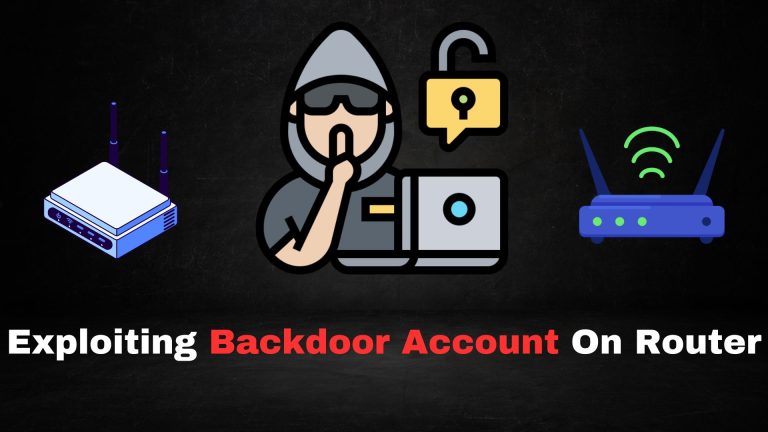
In the world of cybercrime, carding and cracking are two of the most prevalent and dangerous activities targeting individuals and businesses alike. These malicious practices involve stealing financial data, gaining unauthorized access to systems, and exploiting vulnerabilities in order to make fraudulent transactions. In this deep dive, we’ll take a detailed look at how these attacks are carried out, how they evolve, and, most importantly, the comprehensive mitigations that can help protect against them.
What is Carding?
Carding refers to the illegal practice of using stolen credit card information to make fraudulent purchases or transfer funds. The information is typically obtained through methods such as data breaches, phishing, or malware attacks. Once card details are in the hands of criminals, they can either use them directly or sell them on underground forums and dark web marketplaces.
How Carding Works
- Data Collection: Carders use various tactics to collect cardholder information. This might include:
- Data breaches: Attacks on companies that store payment card details.
- Phishing: Tricking users into disclosing card details through fake websites or emails.
- Skimming devices: Devices installed on ATMs, gas pumps, or point-of-sale (POS) terminals to capture card information when users swipe or insert their cards.
- Malware: Keyloggers or spyware used to steal card data from infected machines.
- Testing Stolen Cards: Carders don’t typically use the stolen card information immediately. Instead, they test it on low-cost, low-risk transactions such as purchasing cheap items or making small transfers. This allows them to check if the card is valid, if it has a sufficient balance, and if the transaction passes through without being flagged.
- Using or Reselling Data: Once carders verify the legitimacy of the card details, they either:
- Make large fraudulent purchases on goods and services, which are either resold for cash or used for personal gain.
- Sell the stolen data on dark web forums or other underground marketplaces to other criminals for a profit.
Techniques Used in Carding
- Card-Not-Present (CNP) Transactions: This is where stolen card information is used for online transactions where the physical card is not required. This makes it easier for fraudsters since they do not need to have possession of the physical card.
- Transaction Laundering: Some carders use legitimate businesses (often unwittingly) to launder funds. They use stolen card data to make payments, which are then transferred to other accounts.
- Gift Card Fraud: Stolen card information is often used to buy gift cards, which are harder to trace, and can be sold or used freely.
What is Cracking?
Cracking is a term used for breaking into encrypted systems, bypassing password security, or accessing locked systems without authorization. In the context of carding, cracking is often used to gain unauthorized access to payment platforms or online accounts by exploiting weak or compromised authentication systems.
How Cracking Works
- Password Cracking: Attackers use automated tools to guess passwords by trying various combinations until the correct one is found. These tools exploit weaknesses in systems where users use predictable passwords or systems with poor password policies.
- Brute Force Attacks: A method where all possible combinations of a password are attempted until the correct one is found. This is time-consuming and relies on having enough computational power.
- Dictionary Attacks: Instead of trying every combination, attackers use a precompiled list of common words (like “password123” or “qwerty”) to guess the password.
- Encryption Cracking: When attackers target encrypted data, they use decryption methods or exploit weaknesses in encryption algorithms to gain access to sensitive information. In carding, this could involve decrypting stored payment data or bypassing encryption in payment gateways.
- Exploiting Vulnerabilities: Cracking is also used when attackers exploit unpatched security flaws in software, databases, or websites. Once inside, they may extract sensitive data like payment information or perform other malicious actions.
- Social Engineering and Phishing: While cracking typically involves technical skills, social engineering remains a common technique used to gain access to secure systems. Attackers can trick individuals into providing access credentials, which they then crack.
Advanced Mitigation Techniques
Given the complexity and sophistication of carding and cracking attacks, defending against them requires a multi-layered, proactive approach. Below are advanced mitigation strategies that organizations and individuals can implement to protect against these threats.
1. Employing Strong Multi-Factor Authentication (MFA)
Multi-factor authentication (MFA) is one of the most effective ways to prevent unauthorized access. By requiring multiple forms of identification—something you know (password), something you have (a smartphone or hardware token), and something you are (biometric data)—MFA significantly reduces the risk of an attack succeeding.
- Adaptive Authentication: Using contextual data, such as location or device type, adaptive authentication adjusts the authentication requirements based on risk levels.
- Push Notifications: For critical actions like payments or login attempts, systems should send push notifications to the user’s phone, prompting them to verify or deny the request.
2. Encrypt and Hash Sensitive Data
Strong encryption ensures that even if attackers manage to steal data, they cannot easily make sense of it. Use modern encryption algorithms like AES-256 for data at rest and TLS for data in transit. For passwords and card details, use strong hashing algorithms such as bcrypt or Argon2, along with a unique salt for each password.
- End-to-End Encryption (E2EE): For transactions or sensitive communications, implement E2EE to ensure data is encrypted at the sender’s end and can only be decrypted by the intended recipient.
3. Implement Real-Time Fraud Detection and Transaction Monitoring
Implementing real-time monitoring is crucial for detecting and blocking carding attempts before they can do significant damage. Fraud detection systems use machine learning and AI to analyze transaction patterns and identify anomalies, such as:
- Multiple failed card verification attempts from the same IP.
- High-frequency small transactions across different accounts.
- Geolocation mismatches between login location and the cardholder’s known location.
Fraud Prevention Tools: Payment processors can use tools like 3D Secure (3DS), which requires additional verification from the cardholder before processing high-risk transactions.
4. Strengthen Password Policies and User Education
To mitigate cracking attacks, enforce strong password policies:
- Require a mix of upper and lowercase letters, numbers, and special characters.
- Set a minimum password length (e.g., 12 characters).
- Implement password expiration rules and discourage password reuse.
User Education: Educate users about social engineering and phishing scams. Regular awareness campaigns can help reduce the number of users falling victim to credential-stealing tactics.
5. Tokenization and Secure Payment Systems
Tokenization replaces sensitive data, such as credit card numbers, with a random string of characters (token) that is meaningless if intercepted. Even if card data is stolen, attackers cannot use the tokens for fraudulent transactions. Tokenization is a common practice in industries like PCI-DSS-compliant businesses and online payment platforms.
Secure Payment Gateways: Businesses should ensure they are using secure and PCI DSS-compliant payment processors. Systems should never store card details in plaintext.
6. Implement Rate-Limiting, CAPTCHA, and Device Fingerprinting
To defend against brute force and credential stuffing attacks, use rate-limiting techniques to limit the number of login attempts within a given time. After a set number of failed login attempts, the account should be locked or require additional verification.
CAPTCHA: Protect login and payment pages with CAPTCHA to ensure that only humans, not bots, are attempting to access accounts or make transactions.
Device Fingerprinting: This technique tracks the devices used to access accounts and can be used to detect suspicious logins. If a new device attempts to log in from an unfamiliar location, additional authentication steps can be required.
7. Regular Software Patching and Vulnerability Management
Cracking attacks often succeed because of unpatched vulnerabilities in software. It’s essential to conduct regular vulnerability assessments and patch known security holes as soon as updates are released. Focus on:
- Keeping payment gateways and e-commerce platforms up-to-date.
- Implementing Web Application Firewalls (WAF) to protect against SQL injection, XSS, and other common attacks.
- Regularly auditing the security of third-party integrations.
8. Secure Network Architecture
Use firewalls, intrusion detection systems (IDS), and intrusion prevention systems (IPS) to safeguard networks from unauthorized access. Implement segmentation within your network so that payment systems and sensitive data are isolated from general internet traffic.









